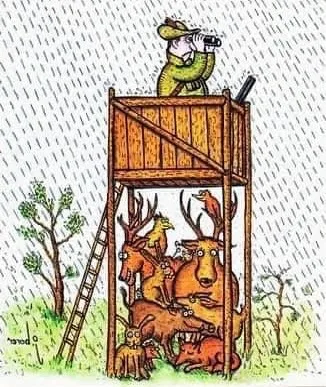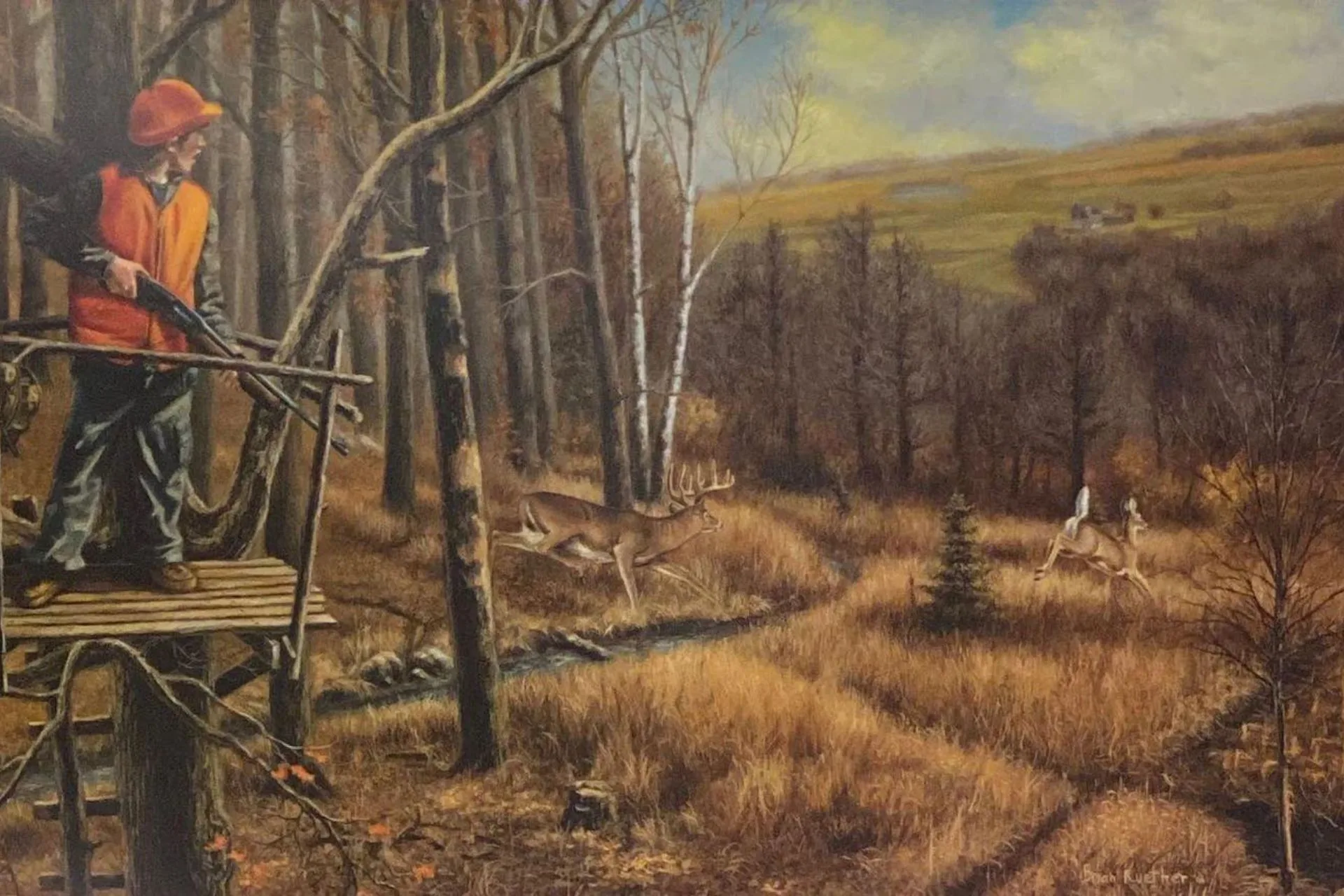Hunting from a Tree Stand can give a hunter a distinct advantage. An elevated shooting position puts the hunter out of the critters scent and sight lines. Most critters are not looking for dangers in the trees.
Back in the day, we built our tree stands from what we had. Usually we took a saw, a hammer and nails, and cut limbs and logs to make ladders, steps, and platforms. Ideally a few high limbs on the tree may supply additional, natural support. A flimsy railing served as a shooting rest and a reminder that we were not on the ground.
We have all climbed some dangerous and sketchy tree stands. No critter is worth getting injured over. One of my friends fell 50 feet from a flimsy tree stand. He went to sleep without wearing a safety harness. He rolled and tumbled forward and landed on his chest. Heavy clothing and a leavy forest floor helped but he broke several ribs. While crawling back to his truck, he tore off his fingernails and scraped his knees. He ended up screaming in a creek when a woman hanging laundry heard him and came to his rescue. He spent the rest of the hunting season in the hospital.
Most stands told a story. If they were placed by a “Hunter”, there was a reason. This spot is where the critters filed by. Sometimes the stands were in a nice tree but not the right spot.
Normally a stand of 12-16 feet is plenty high. In some cases, higher stands were made. The idea of getting higher increased your field of view.

The most common injury for Hunters is falling from tree stands. Even modern metal stands tend to have their risks. Trees and poorly secured stands will move and sway. Straps age and rot, making them less safe. Leaving stands in the field allows them to wear from the weather. A full harness that goes on your chest and legs is the best. If you fall, you will be upright and not upside down. The straps/harness will distribute your weight and not cut off blood flow.
Never hunt a tree stand without first making a safety inspection. Look for cracked welds, worn or frayed straps, overhanging widow makers or limbs, insect or snake infestations, or other flaws. The legs of a leaning ladder should be solid in the earth. Swaying trees will loosen any stands supports and connections.
ALWAYS wear a safety harness when in a tree stand. This means climbing and leaving. Gear and weapons should be lifted to and from the stand using a cord. Place hooks in the tree to hold packs and gear. Leave a note on your vehicle to say where you are hunting or tell others. Cell phones do not always work. If the phone is in your pack, in the tree, and you have fallen, it’s worthless.
The safest stands are elevated platforms on 4 legs. These enclosed boxes offer comfort and safety. 10 feet tall or so is fine. No wild trees are damaged, and the stands can be moved. Placing these box stands along edges can be effective. Many states allow baiting, and these stands are often the choice to be in shooting range of a bait pile.
Critters figure it out! After a few close encounters, critters learn to look up and smell/see dangers in elevated stands.
Hunt in stands safely!
Montana Grant




